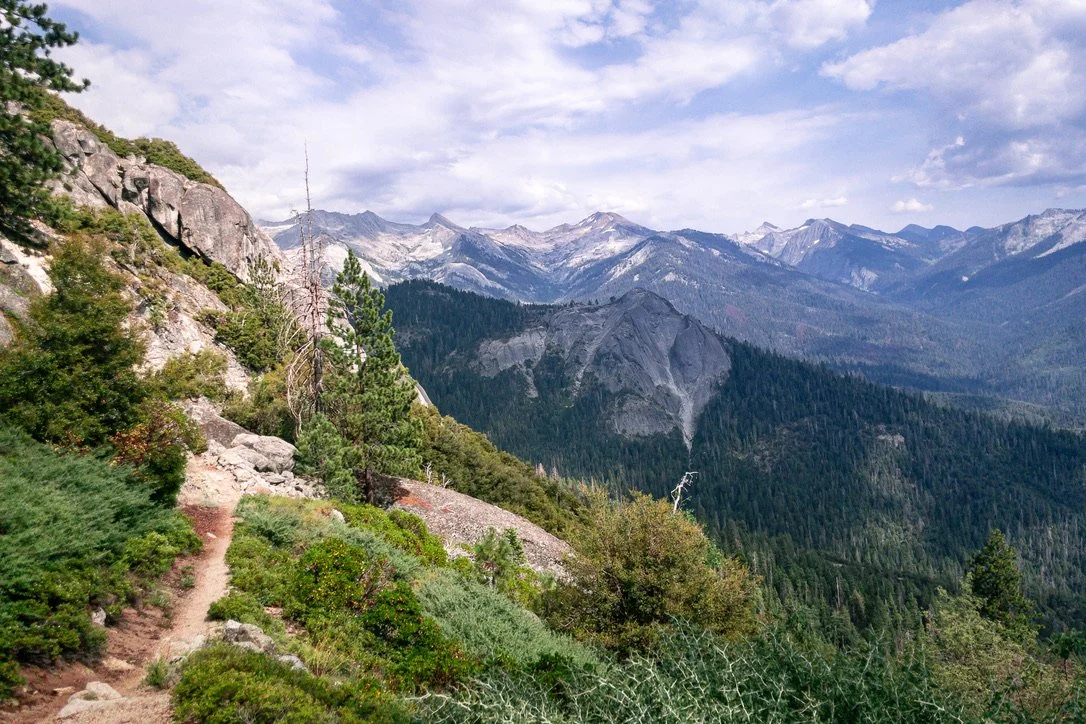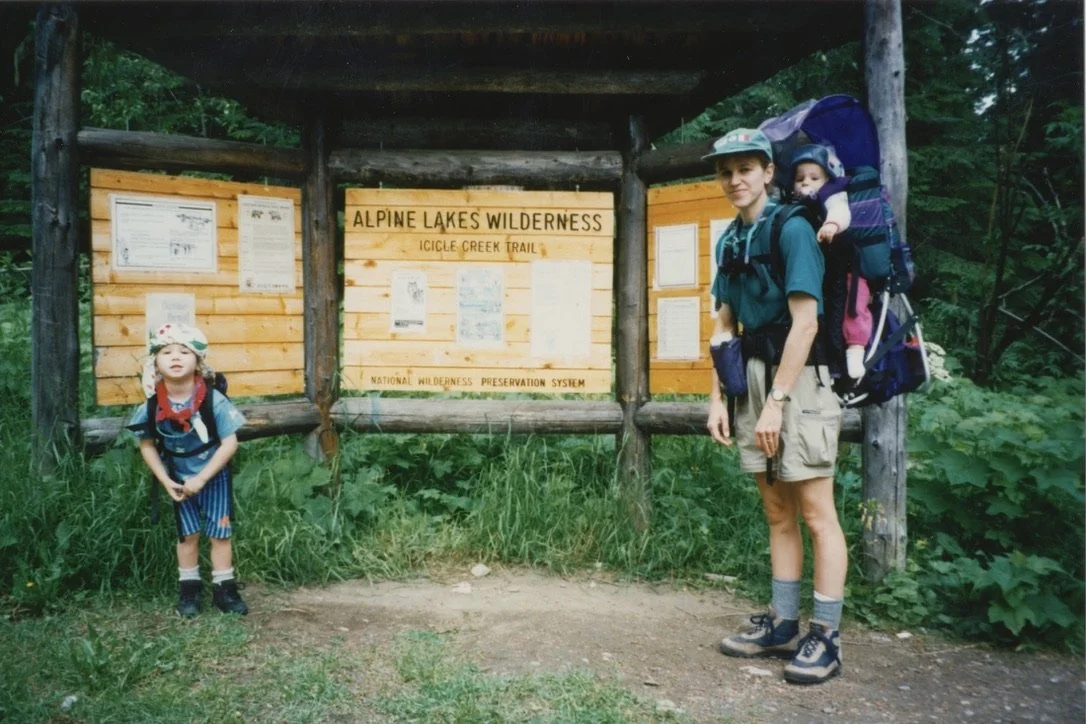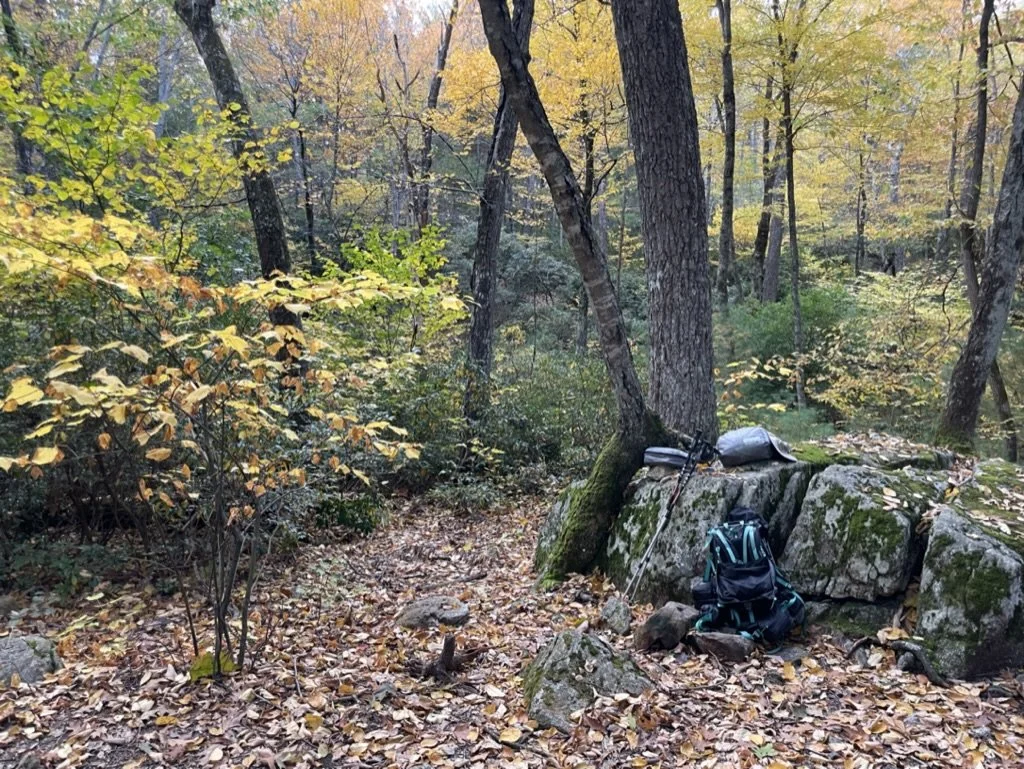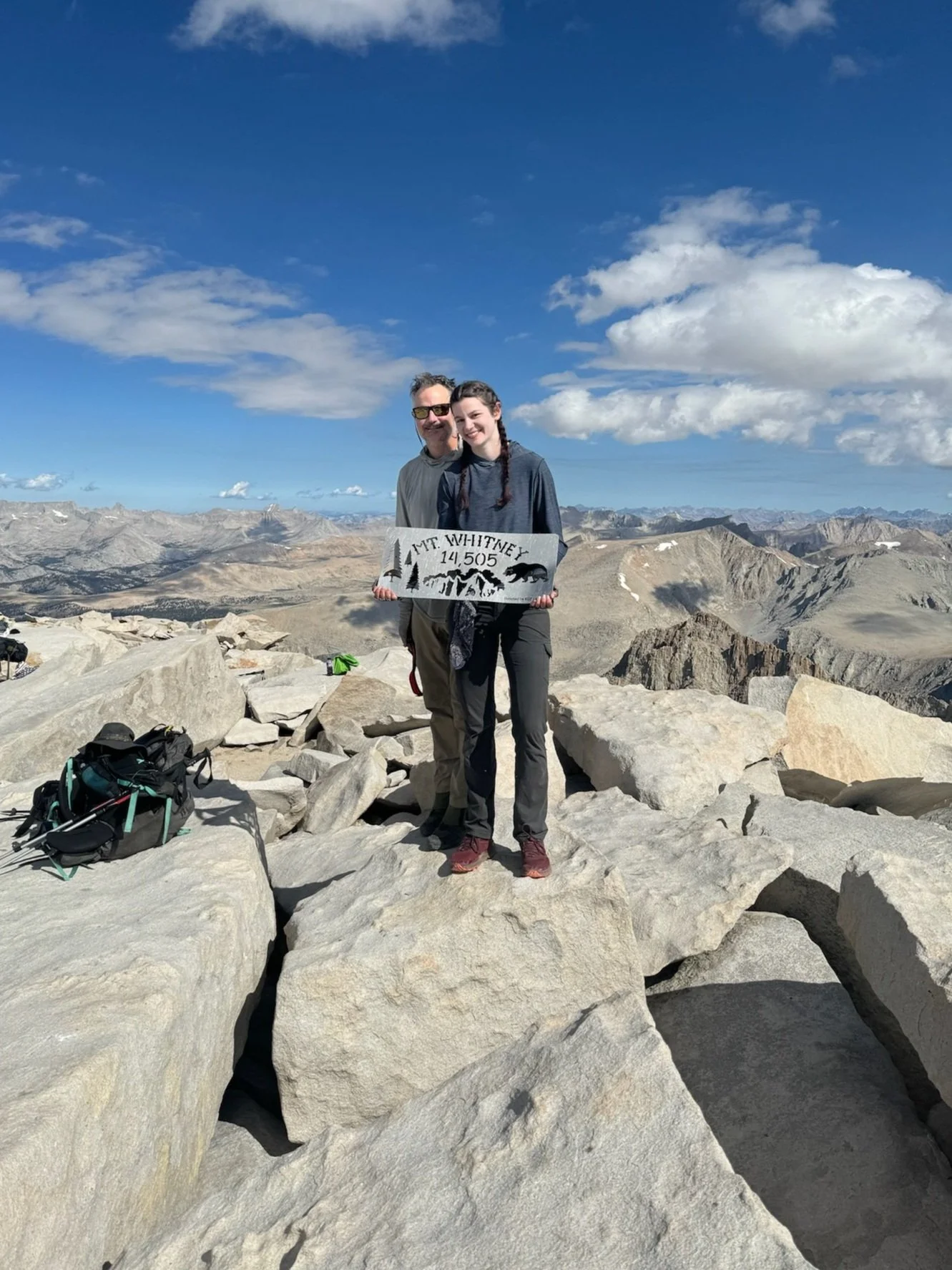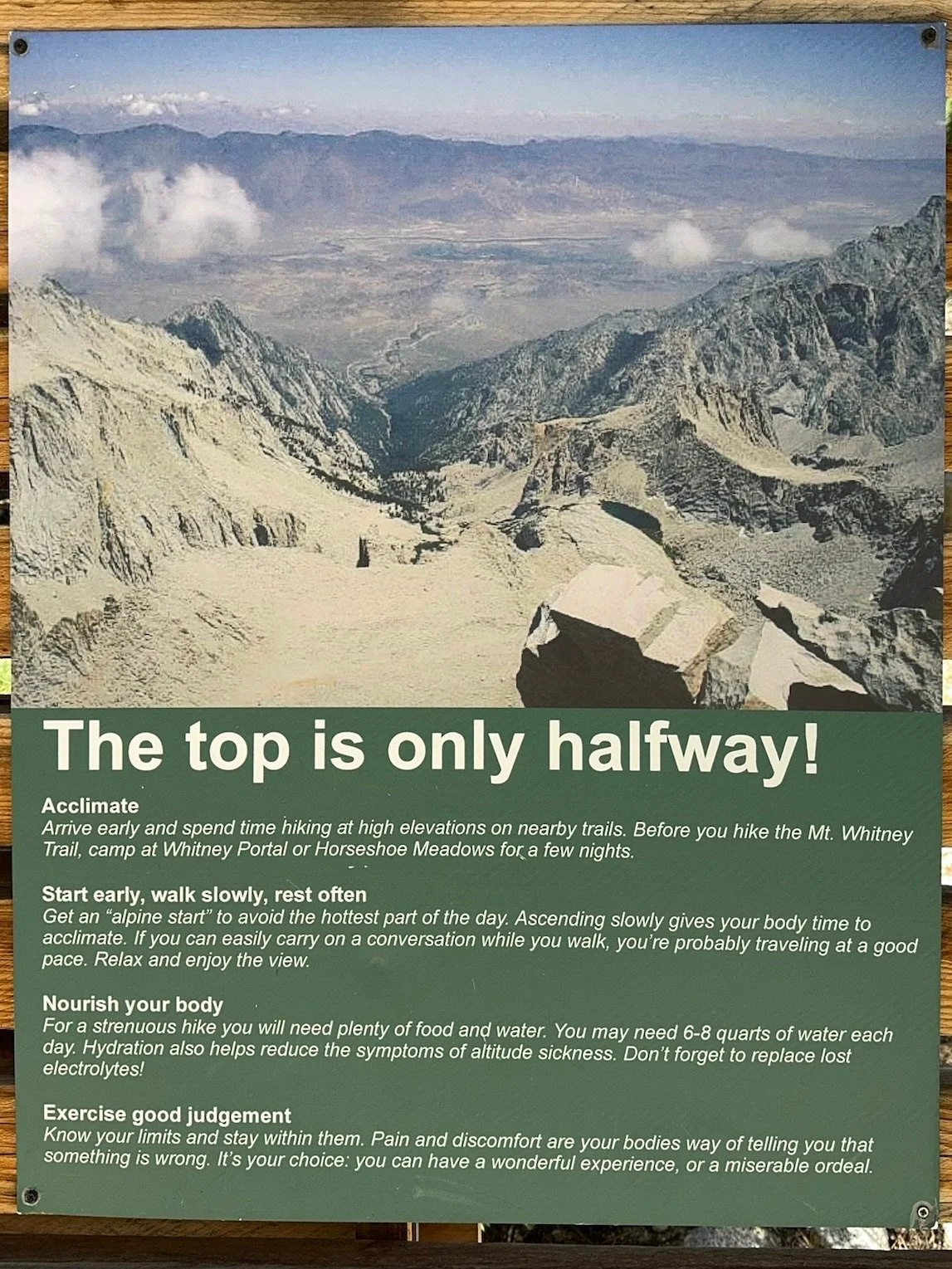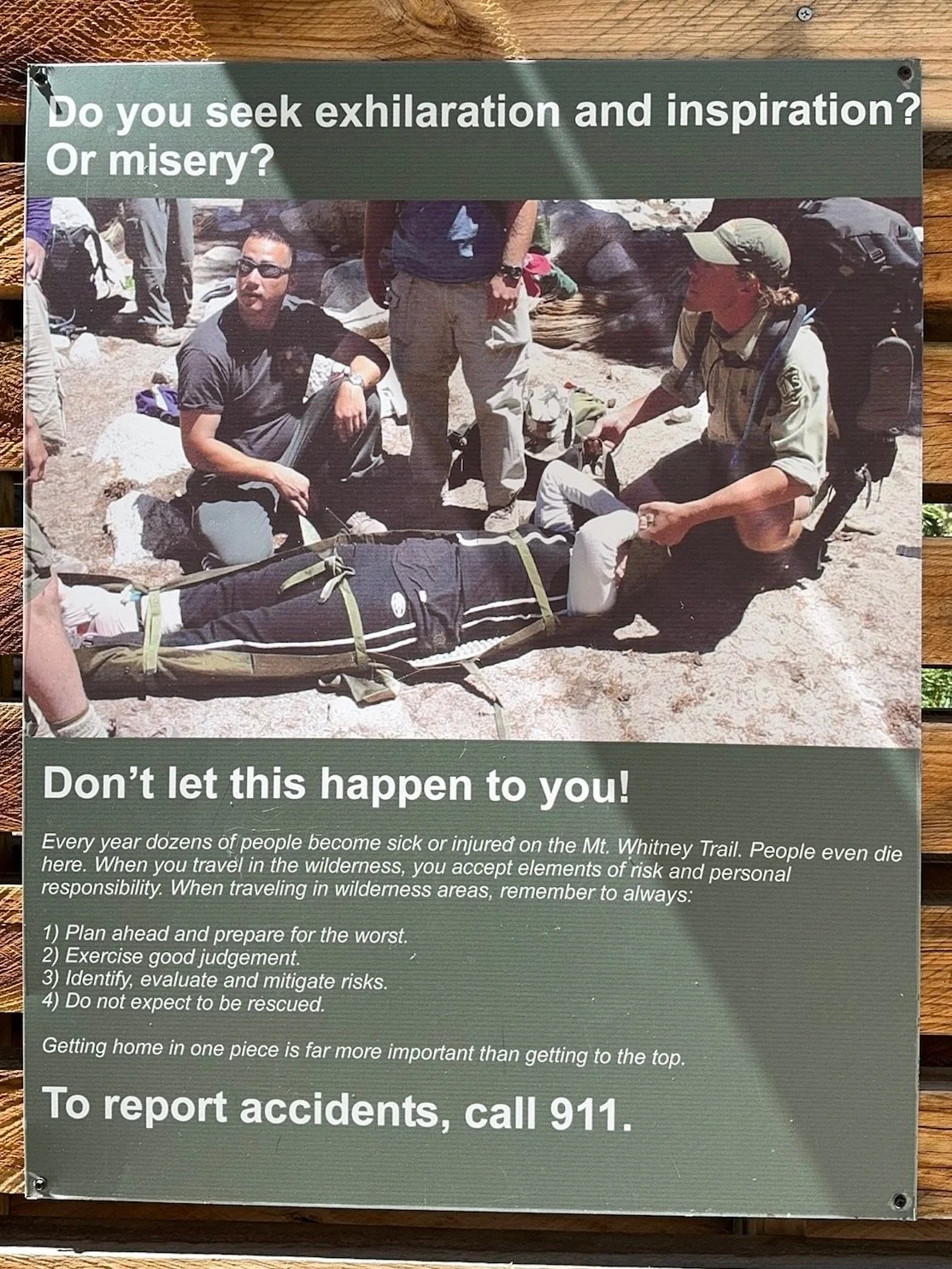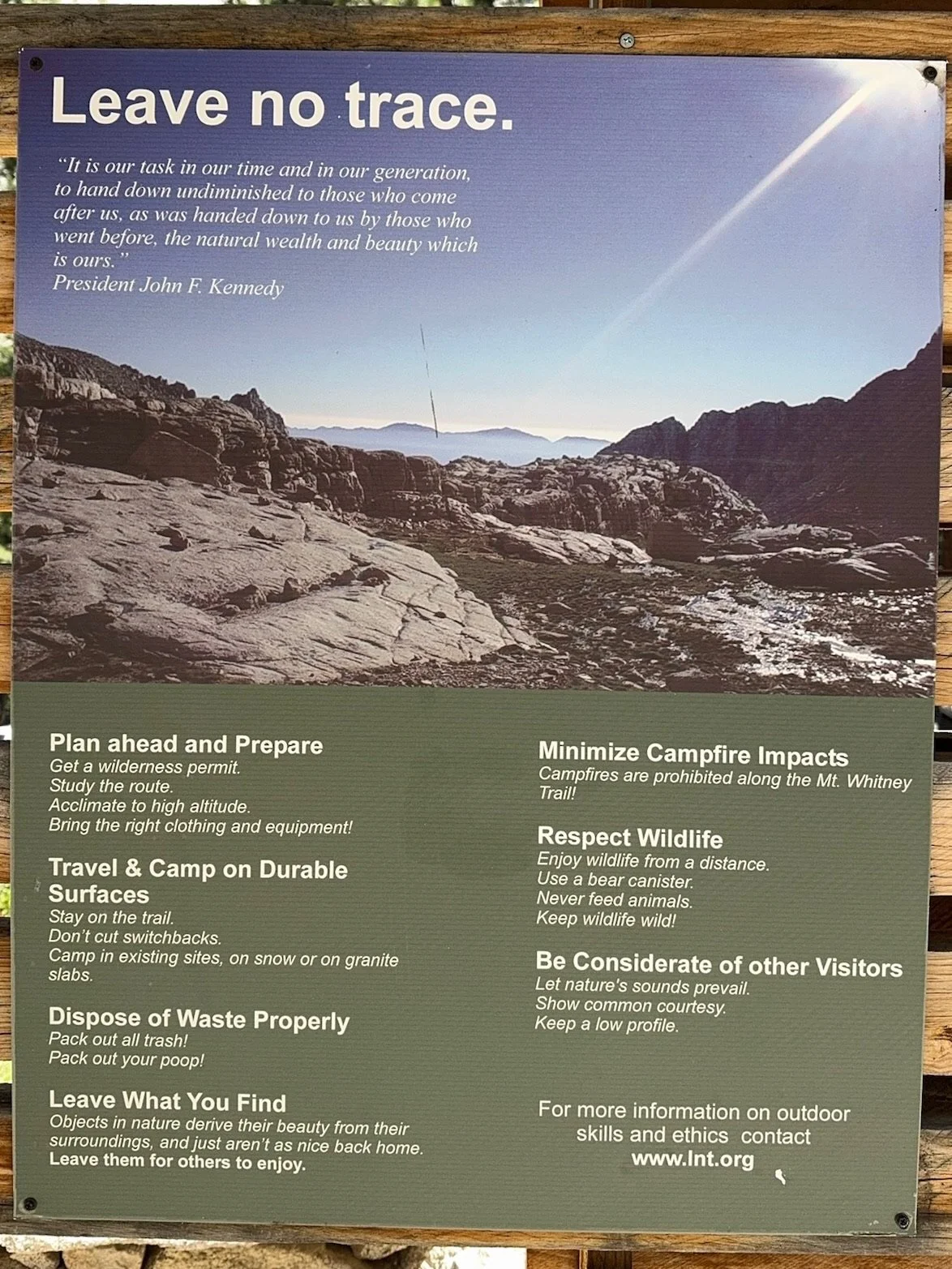Leave No Trace vs Leave a Clean Wake
If you’re outdoorsy at all or spend time with people who are, you may have encountered the idea of Leave No Trace. This set of seven principles offers a practical guide for minimizing human impact during outdoor activities. The seven principles are:
Plan Ahead & Prepare
Travel & Camp on Durable Surfaces
Dispose of Waste Properly
Leave What You Find
Minimize Campfire Impacts
Respect Wildlife
Be Considerate of Others
These principles are designed to be prescriptive, offering concrete actions to protect the environment and wildlife. They are applicable in any outdoor setting, from remote wilderness areas to local parks and even in your backyard. The focus is on minimizing disturbance to the natural world, ensuring that outdoor spaces remain pristine for future visitors.
As I noted in my earlier post comparing Leaving a Clean Wake to other ethical frameworks, LaCW isn’t meant to replace principles like Leave No Trace—it’s meant to provide a broader foundation. It can align with, adapt, or even help generate other ethical insights depending on the situation. In the outdoors, for example, LNT offers a focused set of actions; in the context of LaCW, those same actions become one way of shaping a cleaner wake.
Leave No Trace and Leave a Clean Wake both provide frameworks for responsible and ethical behavior, but differ in scope and application. Leave No Trace is focused on the outdoors and provides a practical framework for minimizing environmental impact. Leave a Clean Wake is a broader, more encompassing life philosophy that extends to all areas of life. Leave No Trace is prescriptive, offering specific guidelines. Leave a Clean Wake, while it can include prescriptive actions, is primarily a guiding principle that encourages people to live in accordance with their deepest values.
So, how do these concepts relate?
Followers of this newsletter will already know that my dad started backpacking as a child and I started backpacking as a baby. At this point, our gear and skills are pretty dialed in. One of the joys of remote backcountry travel is getting to a point where you can tackle off-trail terrain where there literally are no other footprints but your own and no established campsites. When “stealth-camping” on an off-trail route, we will gently “terraform” a spot for a small tent—brushing aside sticks and pinecones, maybe nudging a rock or padding over a root with leaves to create a one-night tent site.
At first glance, off-trail travel and stealth camping might seem to contradict the Leave No Trace principle about sticking to durable surfaces and established campsites. And in high-use areas, that guidance absolutely holds—you should camp where others already have been to concentrate impact. But in truly remote backcountry, the picture shifts. With the right skill, awareness, and respect for the terrain, stealth camping can actually be more in line with the actual spirit of Leave No Trace.
That’s why the most important part of stealth-camping comes when we leave: un-terraforming. We replace the rocks, scatter the debris, fluff the grass. If we’ve done it right, no one could tell we were ever there.
Taken literally, Leave No Trace might discourage this kind of camping. But when you frame it through the lens of Leaving a Clean Wake, the intention becomes clearer. We’re not ignoring LNT—we’re fulfilling its deepest purpose: reducing cumulative impact and helping the land recover.
That’s the power of LaCW as a guiding philosophy. It doesn’t override other principles—it helps us interpret them wisely, adaptively, and with full awareness of context. You can practice Leave No Trace as a specific way of leaving a clean wake when you’re hiking or camping. The principles of Leave No Trace can be contained within the broader goal of leaving a clean wake.
Whether you're hiking in the wilderness or navigating daily life, strive to be mindful of your impact. Ultimately, it’s not possible to leave absolutely no trace (although that doesn’t mean you shouldn’t try when the situation calls for it!). Leave a Clean Wake acknowledges that you will leave an impression of some sort, and only asks that you try your best to make it a positive one. In the context of outdoor recreation, that means leaving as small and inconspicuous an impression as you can.
By following the seven principles of Leave No Trace on a camping trip, you are leaving a clean wake by minimizing damage to the backcountry from human impact. Leaving a clean wake means recognizing that you leave an impression on the world and making conscious choices accordingly.
Last summer, my dad and I thru-hiked the High Sierra Trail. (You can read about the whole experience if you want on the blog I wrote for The Trek.) Like the more famous Pacific Crest and John Muir trails, the literal high point of the HST is the summit of Mt. Whitney at 14,500 feet. On our final night camped off-trail at Consultation Lake just below the summit, a helicopter buzzed the basin just as we were settling in with dinner. It looped several times to burn fuel, then dropped out of sight—apparently responding to an SOS call from a hiker suffering from altitude sickness. We and a few nearby hikers speculated quietly about what had happened, but no one knew for sure. The next day, we learned that the rescue had been for someone who had been struggling with altitude sickness for several days before her group called for help.
Whitney is a popular summit, and plenty of day hikers head up from the Portal trailhead at 8,000 feet—some without much acclimatization or a clear sense of what they’re getting into. Rescues like this one happen every year. According to SAR teams, they’re almost always the result of someone being unprepared: not enough food or water, no plan for the altitude, pushing too hard past their limits.
It’s a powerful reminder of why Plan Ahead and Prepare is the very first principle of Leave No Trace. And it’s also where Leaving a Clean Wake adds something extra. Being prepared isn’t just about your own safety—it’s about not leaving others to manage the consequences of your decisions. It’s a quiet kind of impact, and one that’s easy to overlook. But when we show up ready—mentally, physically, and logistically—we reduce our ripple effect on the environment and on the people around us.
At the end of the day, both Leave No Trace and Leaving a Clean Wake ask the same thing of us: to move through the world with awareness and care. One gives us a clear set of practices for outdoor spaces; the other offers a mindset that applies more broadly, wherever we go. In future posts, we’ll continue exploring how Leaving a Clean Wake sits alongside other familiar ethical principles—like the Golden Rule, the Girl Scout Law, and more. As we’ve now seen with Leave No Trace, these frameworks don’t have to compete with one another. In many cases, they reinforce each other—and together, they can help us leave a cleaner wake in every part of life.
The Leave No Trace organization has a ton of great information about how to be a responsible visitor to the outdoors, including details about each of the seven principles, education and training materials, scientific research, and more. We definitely recommend checking them out!

